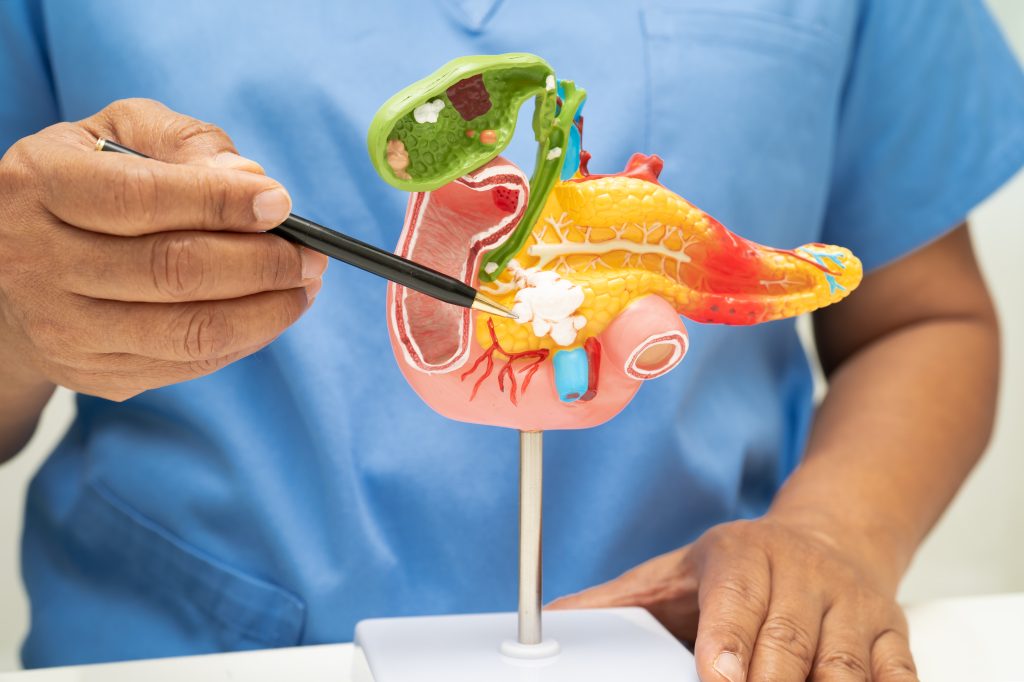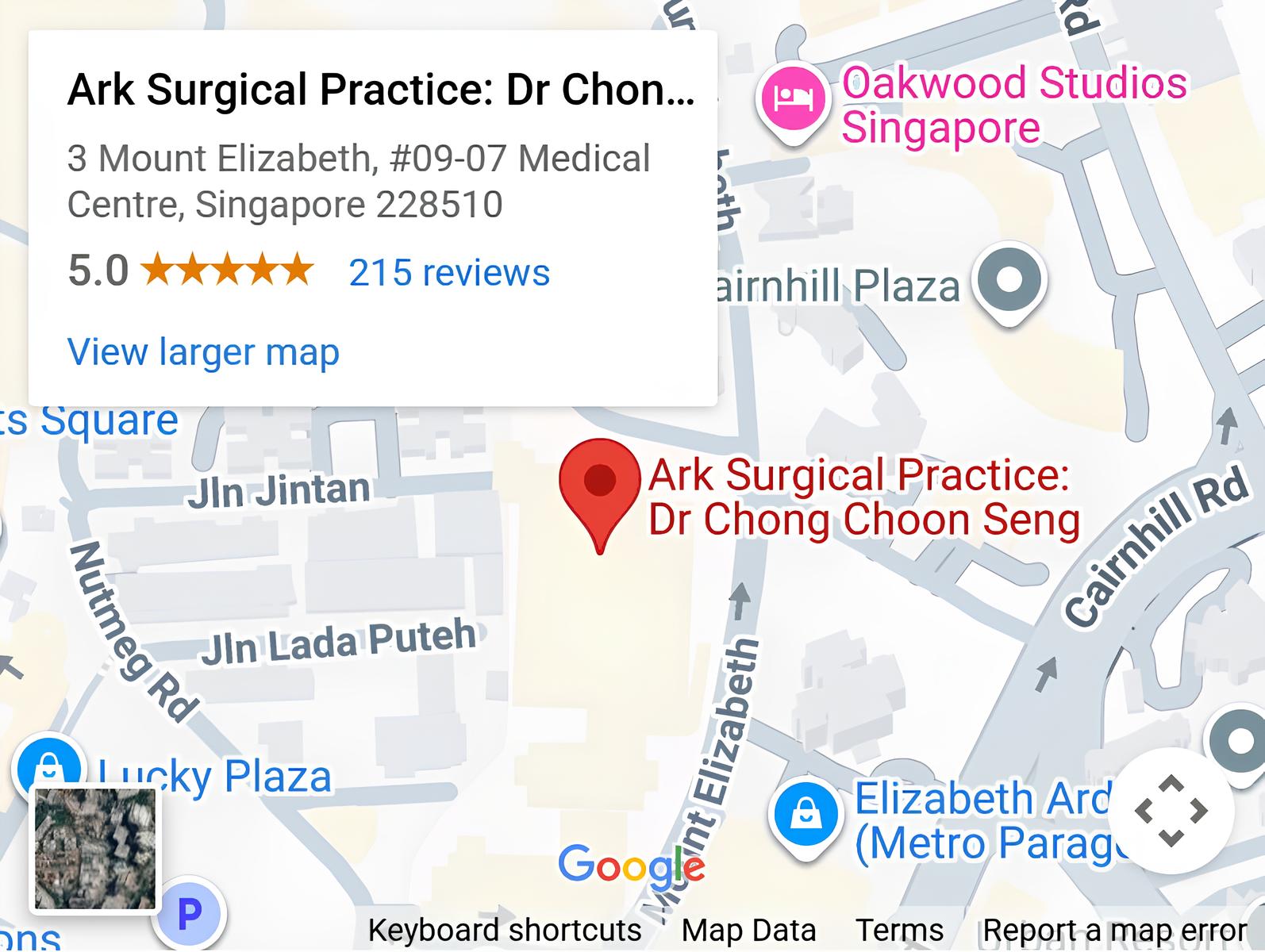- Abdominal pain: Discomfort in the upper right portion of the abdomen that may come and go or persist.
- Nausea and vomiting: Some patients may experience feelings of sickness, particularly after consuming food.
- Indigestion: Persistent discomfort or burning sensation in the upper abdomen, often mistaken for heartburn or acid reflux.
- Jaundice: In rare cases where polyps are large and obstruct bile flow, the skin and whites of the eyes may develop a yellowish tinge. This is typically only seen with larger polyps.
Gallbladder Polyps
Gallbladder polyps are growths that protrude from the lining of the gallbladder wall into its interior. These growths vary in size and can be either benign (non-cancerous) or, rarely, malignant (cancerous).


Symptoms of Gallbladder Polyps
Most gallbladder polyps do not cause symptoms, especially if they are small. However, some patients may experience:
Causes and Risk Factors
Several factors may increase the likelihood of developing gallbladder polyps:
Age
Gallbladder polyps are more common in middle-aged and older adults, with prevalence increasing after age 40. The risk of malignancy also increases with age.
Cholesterol imbalances
Many gallbladder polyps are cholesterol deposits, which form when the body has difficulty processing cholesterol. High cholesterol levels may contribute to their development.
Chronic inflammation
Persistent inflammation of the gallbladder, known as cholecystitis, may increase the risk of polyp formation. This inflammation often results from gallstones or recurrent infections.
Metabolic syndrome
This collection of conditions, including high blood pressure, high blood sugar, excess body fat around the waist, and abnormal cholesterol levels, may increase the risk of developing gallbladder polyps.
Liver disease
Certain liver conditions can affect bile production and gallbladder function, potentially contributing to polyp formation.
Types of Gallbladder Polyps
Gallbladder polyps are categorised based on their cellular composition:
Cholesterol polyps
The most common type, accounting for approximately 60% of all gallbladder polyps. These are cholesterol deposits that protrude from the gallbladder wall.
Inflammatory polyps
These develop in response to chronic inflammation of the gallbladder. They typically form after repeated episodes of inflamed bladder or infection.
Adenomyomatosis
An overgrowth of the gallbladder lining that creates polyp-like projections.
Adenomas
Polyps that arise from the glandular cells lining the gallbladder. These carry a small risk of becoming cancerous over time, particularly when larger than 10mm.
Adenocarcinomas
Cancerous polyps that develop from the gallbladder lining. These are rare but serious and may require extensive treatment.
Diagnostic Methods
Gallbladder polyps are typically assessed using non-invasive imaging techniques that help determine their size, number, and potential risk:
- Ultrasound: Ultrasound is the primary diagnostic tool used to detect gallbladder polyps. It is a safe and non-invasive test that uses sound waves to generate images of the gallbladder. Polyps as small as 3–5mm can usually be detected. This test also helps distinguish polyps from gallstones and can track any changes in size or number over time.
- CT scan: Computerised tomography uses X-rays to create detailed cross-sectional images of the abdomen. This may be ordered if ultrasound results are unclear or additional information is needed about surrounding structures.
- MRI: Magnetic resonance imaging provides detailed images of the gallbladder, bile ducts, and surrounding tissues without radiation. This is particularly useful for evaluating bile duct involvement.
Surgical Treatment for Gallbladder Polyps
Surgical intervention is typically recommended for polyps with concerning features or those causing persistent symptoms.
Laparoscopic cholecystectomy
The standard surgical approach for removing the entire gallbladder, including any polyps. This minimally invasive procedure involves making several small incisions in the abdomen through which a camera and surgical instruments are inserted. Recovery typically takes 1-2 weeks.
Single-Incision Laparoscopic Surgery (SILS)
This technique involves one incision through the navel rather than multiple cuts. The surgeon uses specialized instruments through this single port to complete the procedure.This procedure may result in less visible scarring. However, it is not suitable for all cases and is typically recommended at the surgeon’s discretion.
Robotic-Assisted Laparoscopic Surgery
The surgeon controls robotic arms from a console while viewing a 3D image of the surgical site. The robotic system provides enhanced precision and dexterity. The setup requires additional operating time but may offer advantages for complex cases.
Are Your Symptoms Affecting Your Quality of Life?
Consult our MOH-accredited specialist for an accurate diagnosis & personalised treatment plan today.

Prevention and Management
While gallbladder polyps cannot always be prevented, maintaining a healthy lifestyle may reduce risk factors. Regular check-ups every 6-12 months are important if you have known polyps, as monitoring can detect any concerning changes early.
Maintaining a healthy lifestyle may help manage symptoms and potentially slow polyp growth, particularly for cholesterol polyps. For those with diagnosed polyps, adhering to your colorectal specialists recommended follow-up schedule is crucial to ensure appropriate management decisions are made based on any changes in polyp size or characteristics.
Frequently Asked Questions
What size of gallbladder polyp is concerning?
Polyps larger than 10mm carry a higher risk of being or becoming cancerous. These typically warrant surgical removal, while smaller polyps may be monitored with regular ultrasounds.
Can gallbladder polyps disappear on their own?
Small cholesterol polyps may occasionally shrink or disappear with lifestyle changes that address cholesterol levels. However, most true polyps do not resolve spontaneously and require monitoring or treatment.
Will I experience digestive problems after gallbladder removal?
Some patients experience temporary changes in digestion after cholecystectomy, most commonly looser stools. This typically improves within a few weeks as the body adjusts to the absence of the gallbladder. A low-fat diet during the adjustment period may help manage symptoms.
How often should I have follow-up ultrasounds for my gallbladder polyps?
For polyps smaller than 10mm without concerning features, follow-up ultrasounds are typically recommended every 6-12 months initially. If polyps remain stable over time, the interval between examinations may be extended.
Can gallbladder polyps return after surgery?
Since cholecystectomy removes the entire gallbladder, polyps cannot recur after surgery. The procedure eliminates both existing polyps and the risk of developing new ones.
Partnered Programmes & Insurance Plans
For Singaporeans, Singapore Permanent Residents and Foreigners. Please speak to our friendly clinic staff about using your insurance plans.

















contact us
Please leave us a message and our friendly clinic staff will get back to you as soon as possible. For urgent or same day appointments, kindly call the clinic to arrange an appointment.
Our Clinic Locations
Ark Surgical Practice – Mount Elizabeth Medical Centre
3 Mount Elizabeth, #09-07
Singapore 228510
Monday to Friday: 9am – 5pm
Saturday: 9am – 12:30pm
Sunday & Public Holidays: Closed
Ark Surgical Practice – Mount Alvernia Hospital
820 Thomson Road,
Mount Alvernia Hospital, #06-52,
Medical Centre D, Singapore 574623
Wednesday: 9am – 12:30pm
Thursday: 2pm – 5pm





